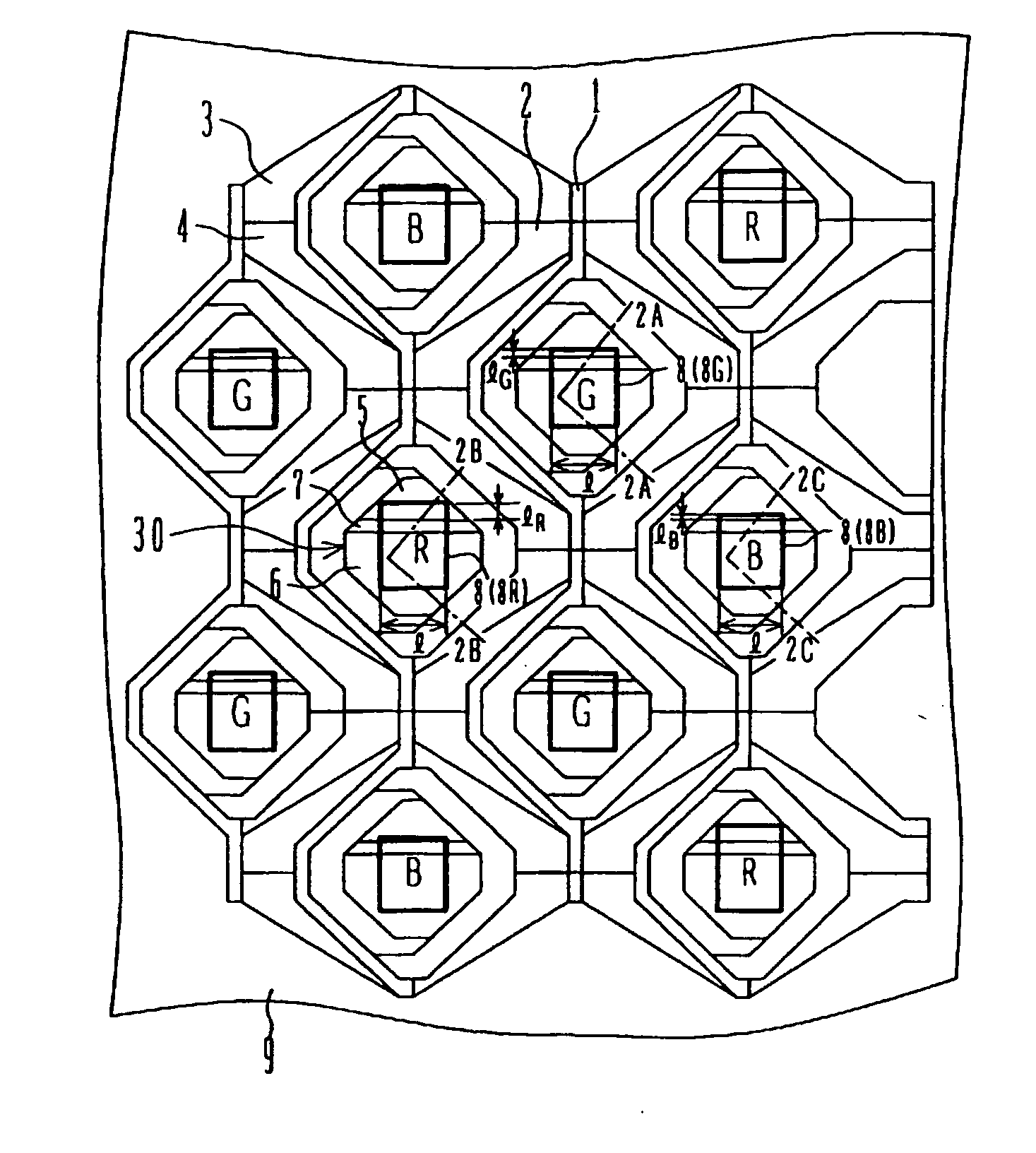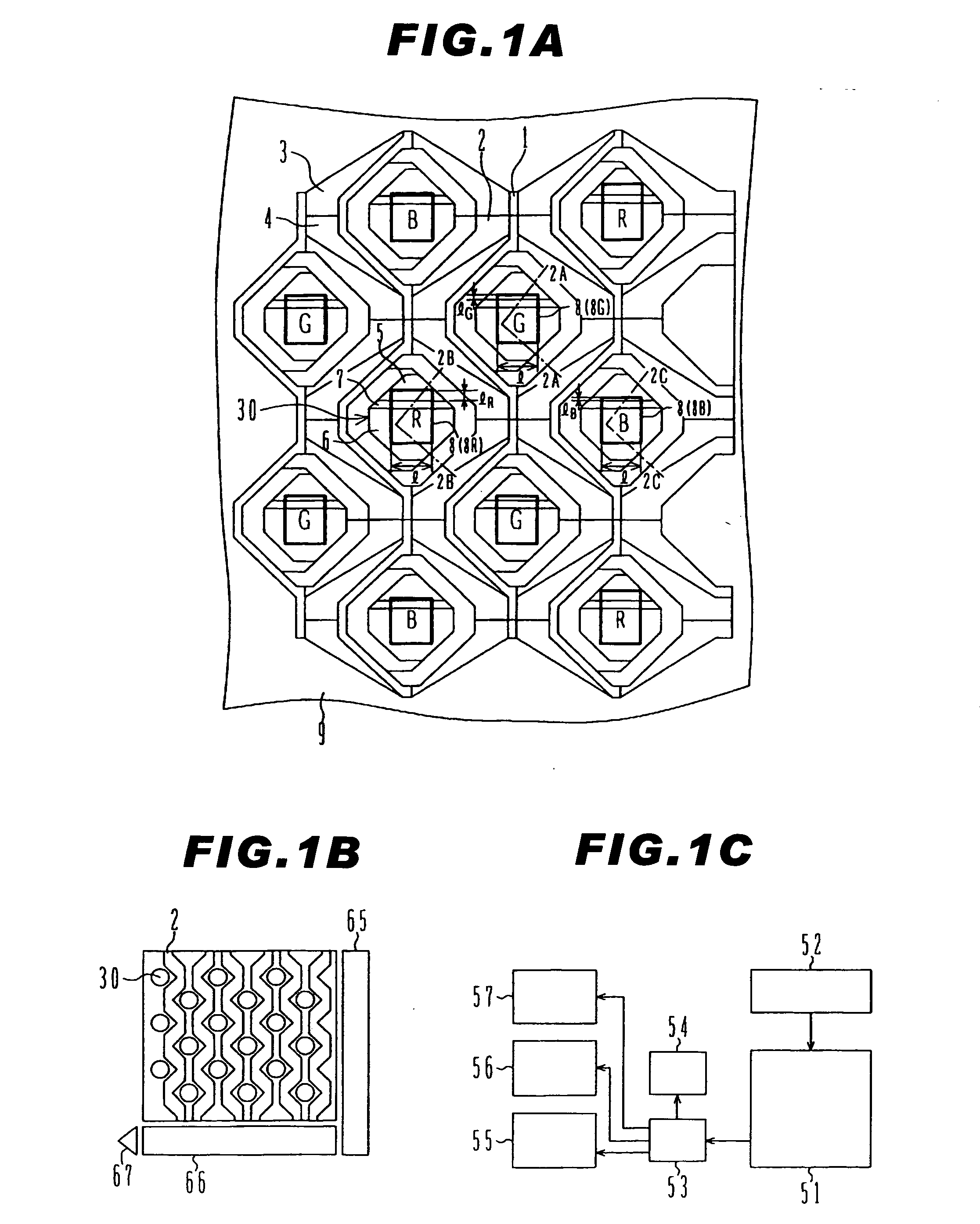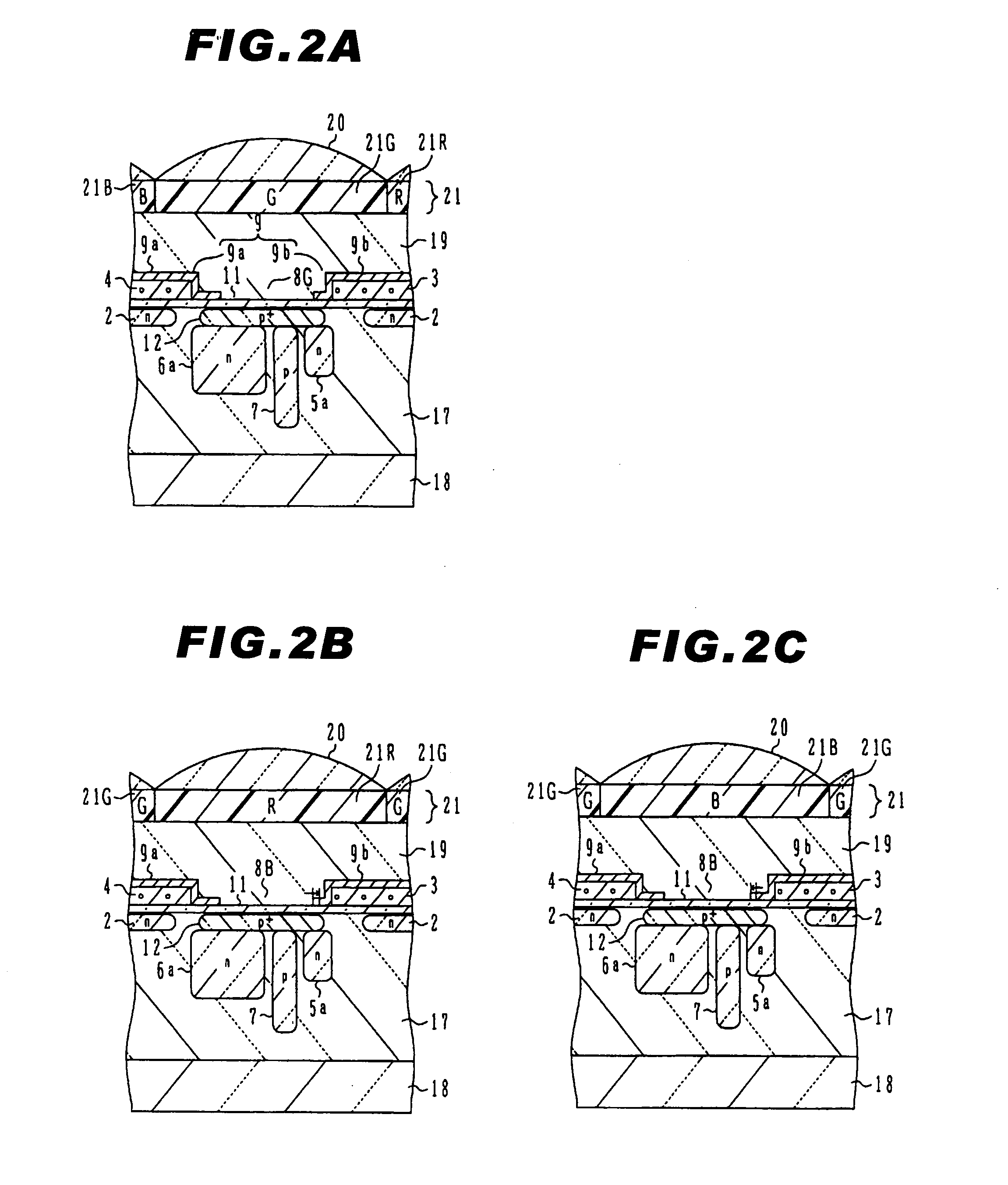Solid state imaging device
a solid-state imaging and imaging device technology, applied in the field of solid-state imaging devices, can solve the problems of imbalanced spectrum sensitivity between the high-sensitive and the low-sensitive photodiodes, difficult that the low-sensitive photodiodes and the high-sensitive photodiodes have the same spectrum sensitivity, and other properties receive a bad influence, so as to prevent a decline in sensitivity
- Summary
- Abstract
- Description
- Claims
- Application Information
AI Technical Summary
Benefits of technology
Problems solved by technology
Method used
Image
Examples
first embodiment
[0040]FIG. 1A, FIG. 1B, FIG. 1C, FIG. 2A, FIG. 2B and FIG. 2C are diagrams for explaining a solid state imaging device according to the present invention.
[0041]FIG. 1A is a schematic plan view showing a part of a light receiving region of the solid state imaging device formed on a silicon substrate. Further, in FIG. 1A, in order to avoid complication, some composition elements such as a color filter, a microlens and the like are omitted.
[0042] In FIG. 1A, a plurality of photosensitive regions 30 are shown. Each photosensitive region 30 has electric charge accumulation regions having different area sizes and opening ratios, and it is formed including two photodiodes having different sensitivity, which are the high-sensitive photodiode 6 and the low-sensitive photodiode 5 and a photodiode isolation region 7 provided between the above-described two photodiodes. The high-sensitive photodiode 6 has a relatively large area and consists a main photosensitive part. The low-sensitive photod...
second embodiment
[0100] Next, the present invention will be explained.
[0101] The inventors of the present invention executed a Finite Differential Time Domain Method (FDTD) considering a wave-optical effect, instead of a ray tracing simulation based on the conventional geometric optics, and analyzed a mechanism of sensitivity decline and color shading at a peripheral area of the solid-state imaging device. As a result, it became clear that light concentrating efficiency of each pixel at a peripheral area of the element and miniaturized pixels is depending on the wavelength of the incident light and a phenomenon that sensitivity of a light will be lower as a wavelength of the light (for example, red light (R)) gets longer.
[0102]FIG. 8 is a graph showing a relationship between a pixel (cell) size at a time that an angle of the incident light is fixed and light concentrating efficiency when the incident light achieves a photoelectric conversion element through a micro-lens, a color filter and an openi...
third embodiment
[0137]FIG. 14A is a plan view showing shapes of openings of the light shielding film in the light receiving region of a solid-state imaging device 300 according to the present invention.
[0138] In the third embodiment, opening areas of the openings 108 are varied from the center part CNT to the peripheral part PHL. For example, when the opening area at the center part CNT is L, and the opening area at the peripheral part PHL is L3, the opening area are enlarged from the center part CNT to the peripheral part PHL in order to make L3=({square root}L1) / Sin θ. Moreover, when the opening area of the interval part INT between the center part CNT and the peripheral part PHL in the light receiving region is L2, the openings 108 are formed in order to have a relationship represented by an equation: L123 (or L12≦L3 or L1≦L23).
[0139] By doing that, as shown in FIG. 14B, the effective opening size for the same light source can be maintained to be the same both in the center part CNT and the per...
PUM
 Login to View More
Login to View More Abstract
Description
Claims
Application Information
 Login to View More
Login to View More - R&D
- Intellectual Property
- Life Sciences
- Materials
- Tech Scout
- Unparalleled Data Quality
- Higher Quality Content
- 60% Fewer Hallucinations
Browse by: Latest US Patents, China's latest patents, Technical Efficacy Thesaurus, Application Domain, Technology Topic, Popular Technical Reports.
© 2025 PatSnap. All rights reserved.Legal|Privacy policy|Modern Slavery Act Transparency Statement|Sitemap|About US| Contact US: help@patsnap.com



